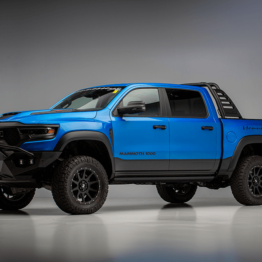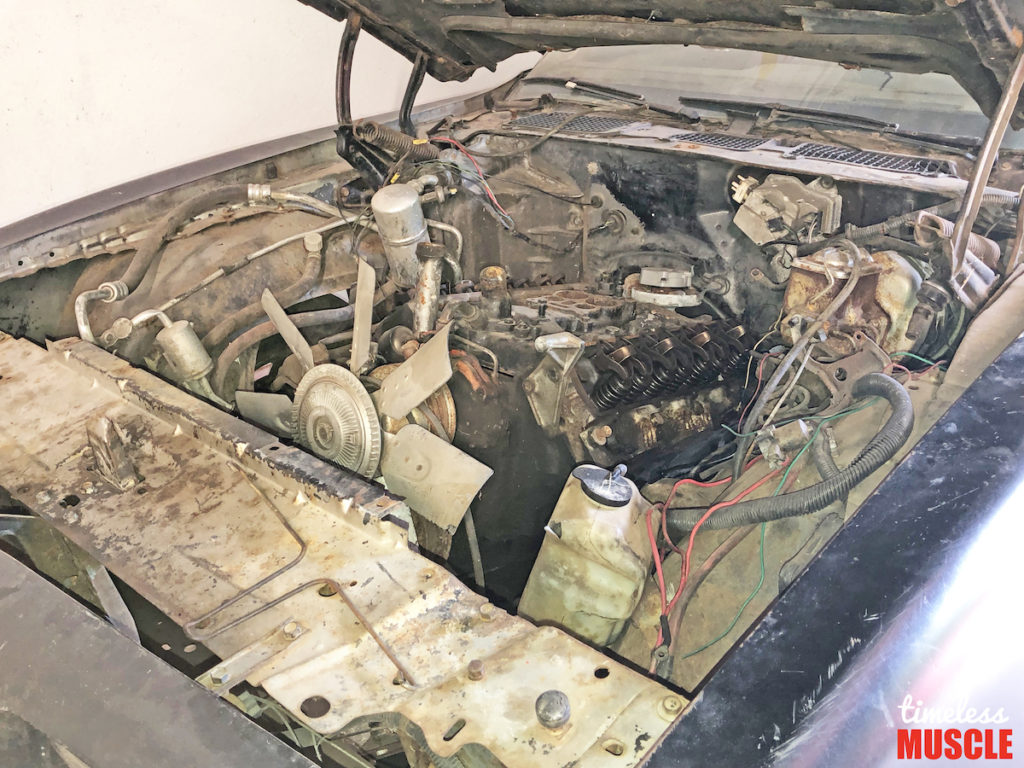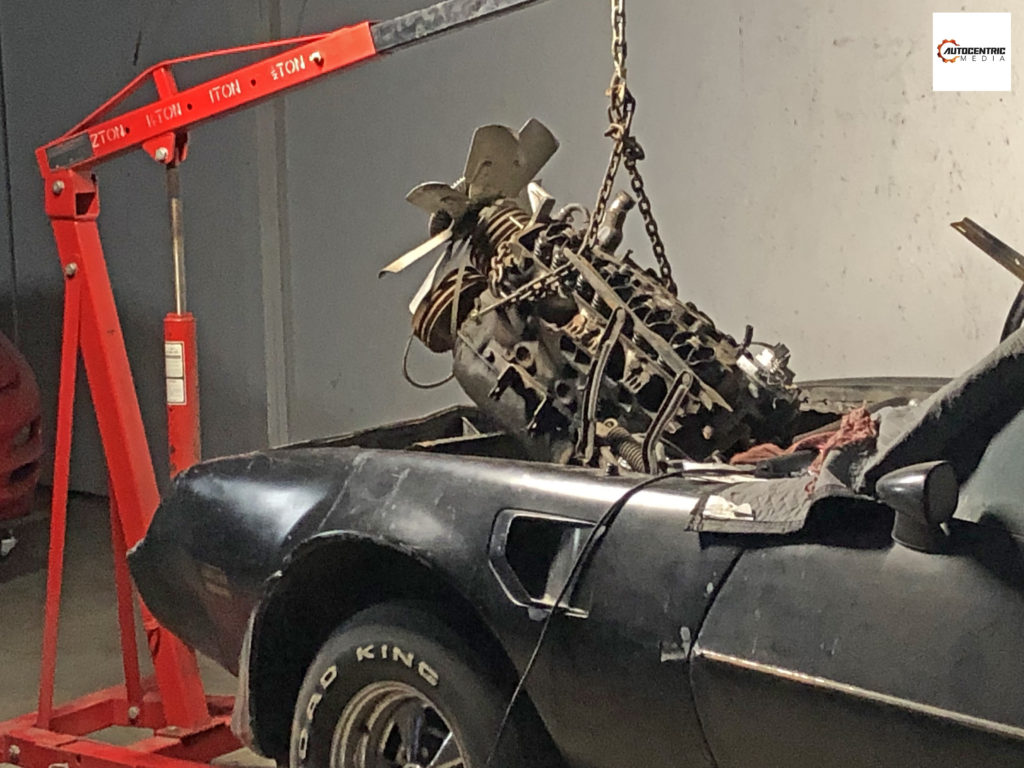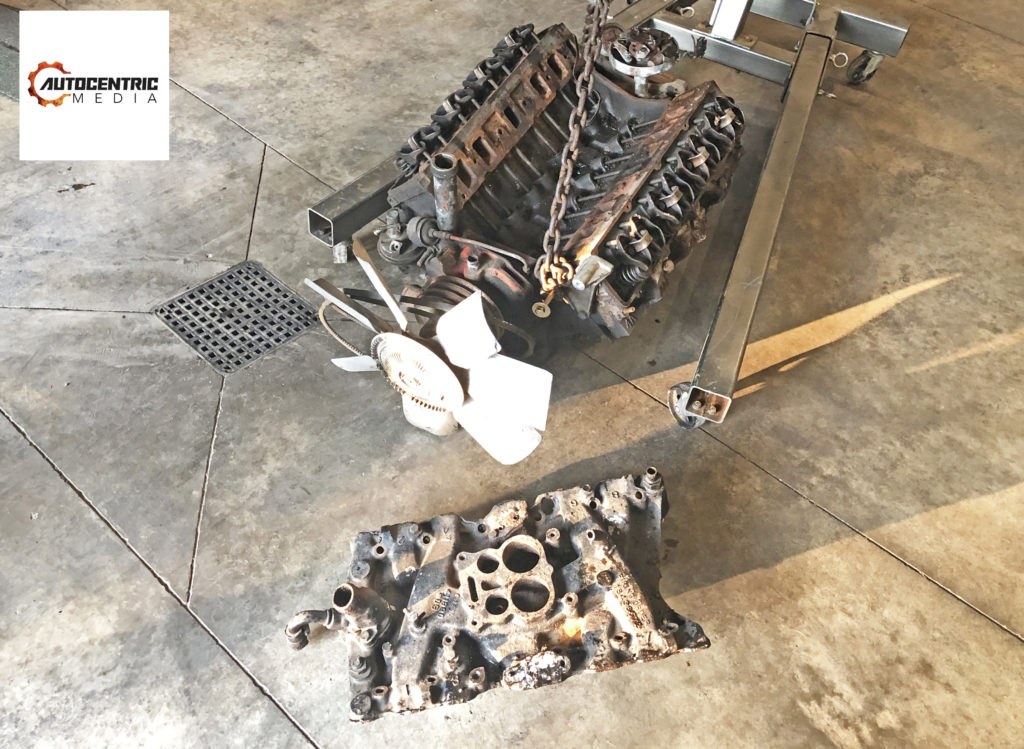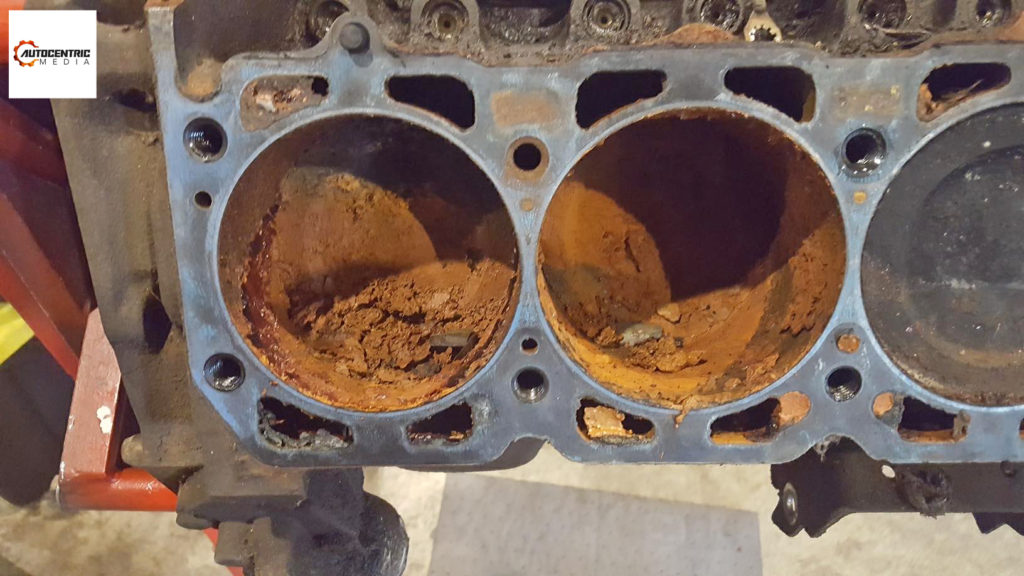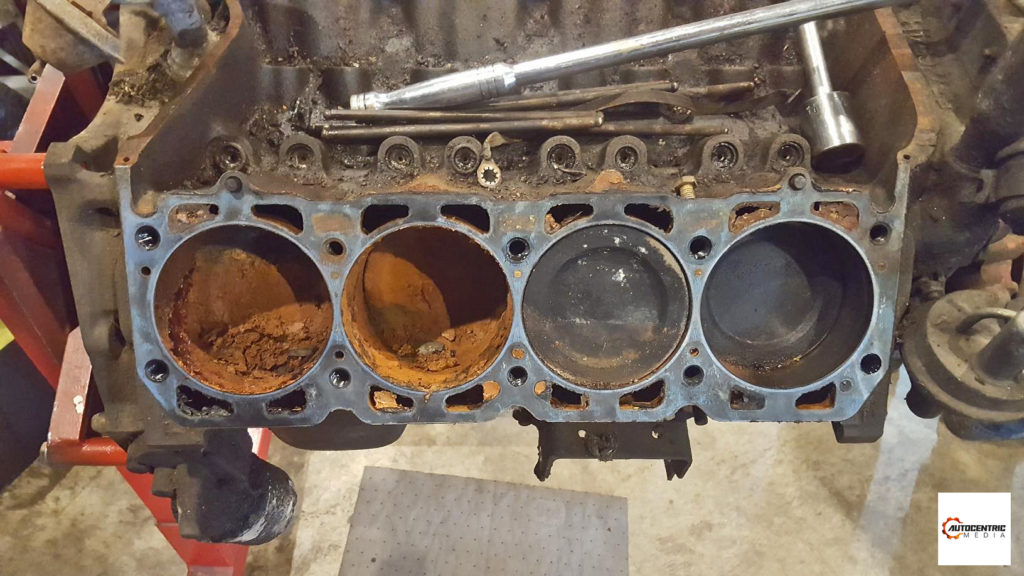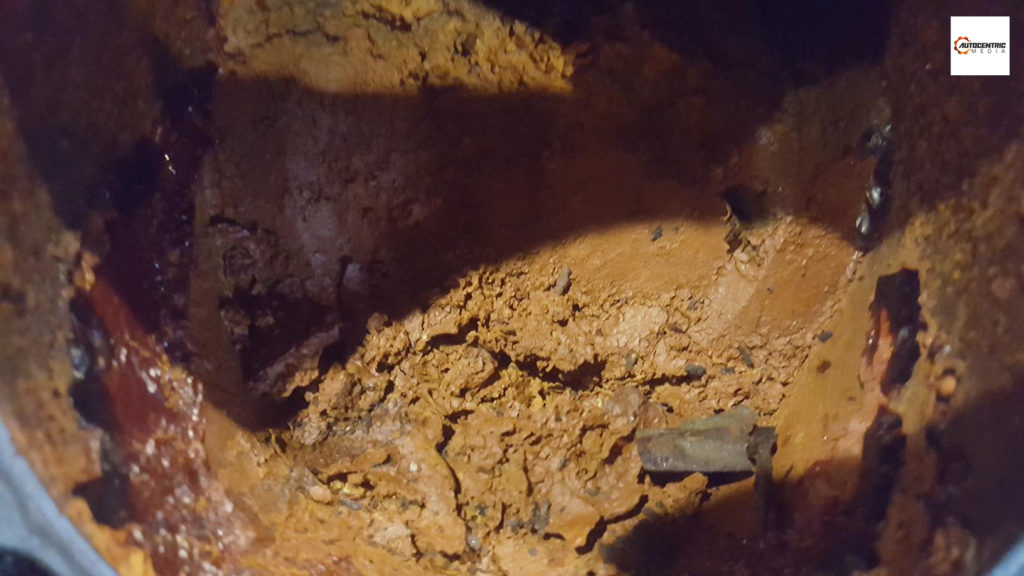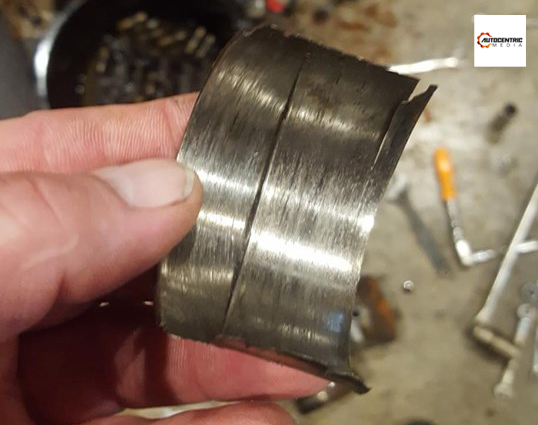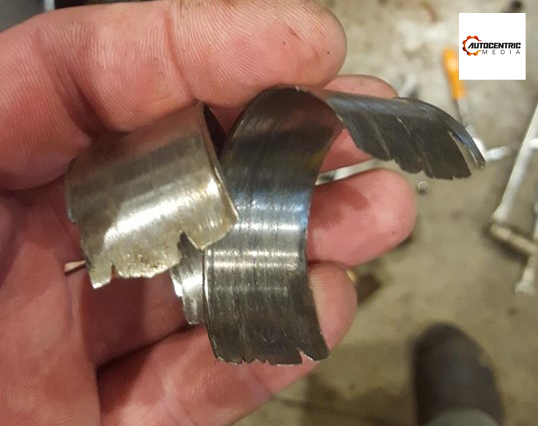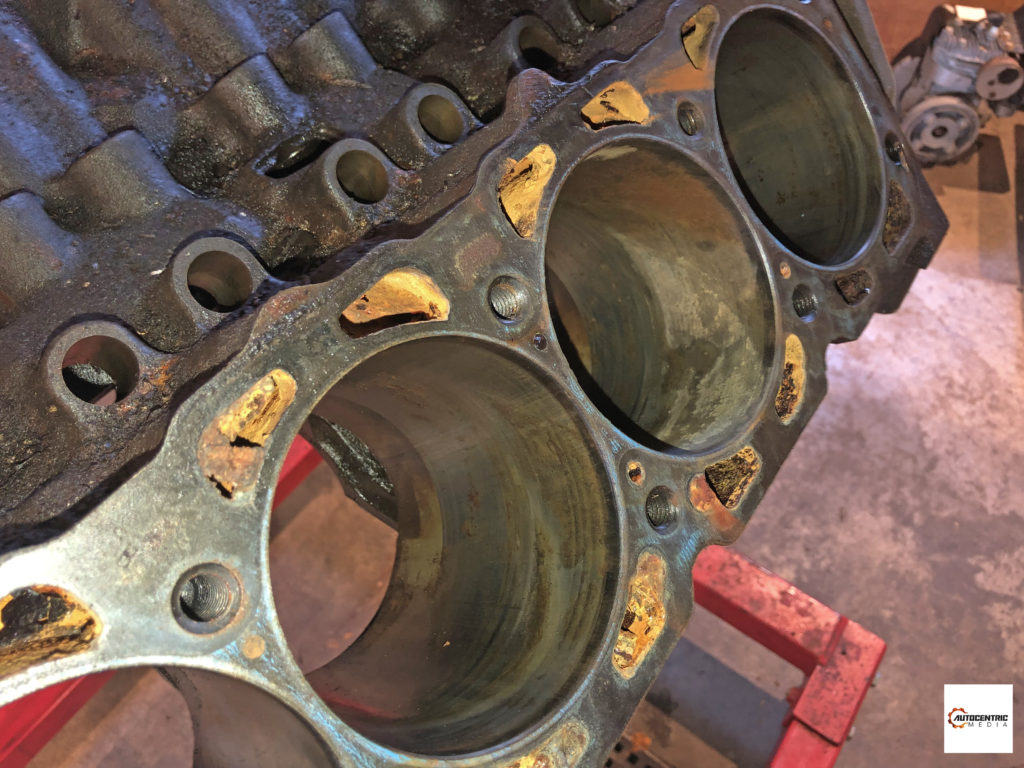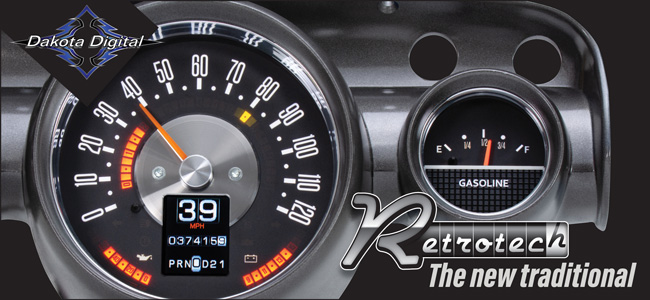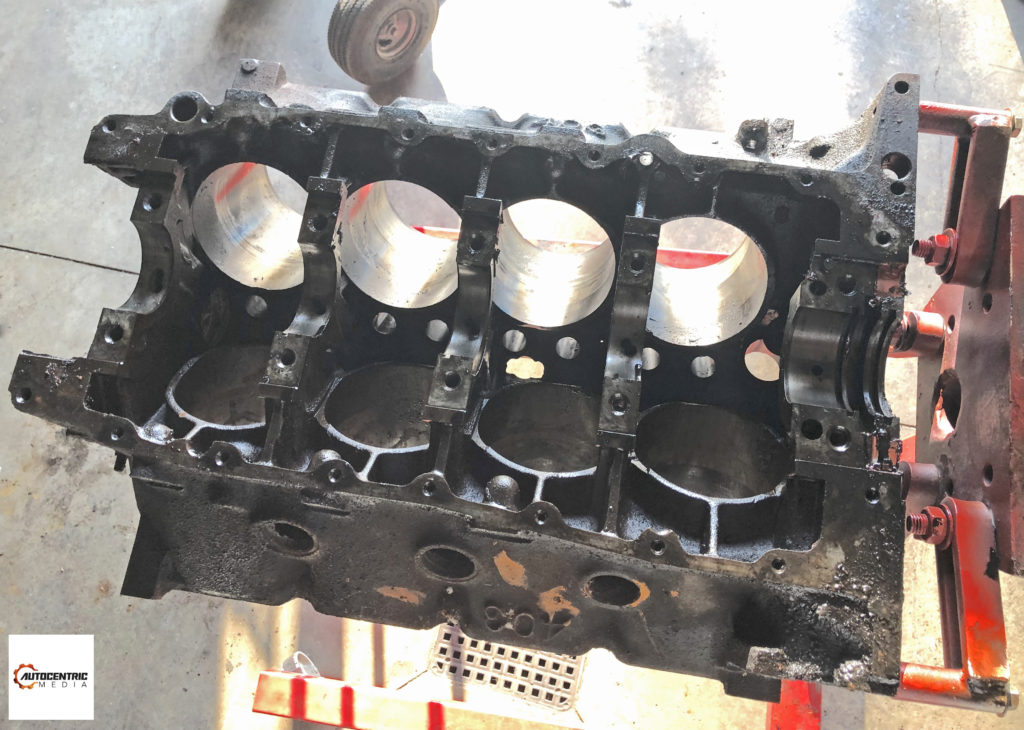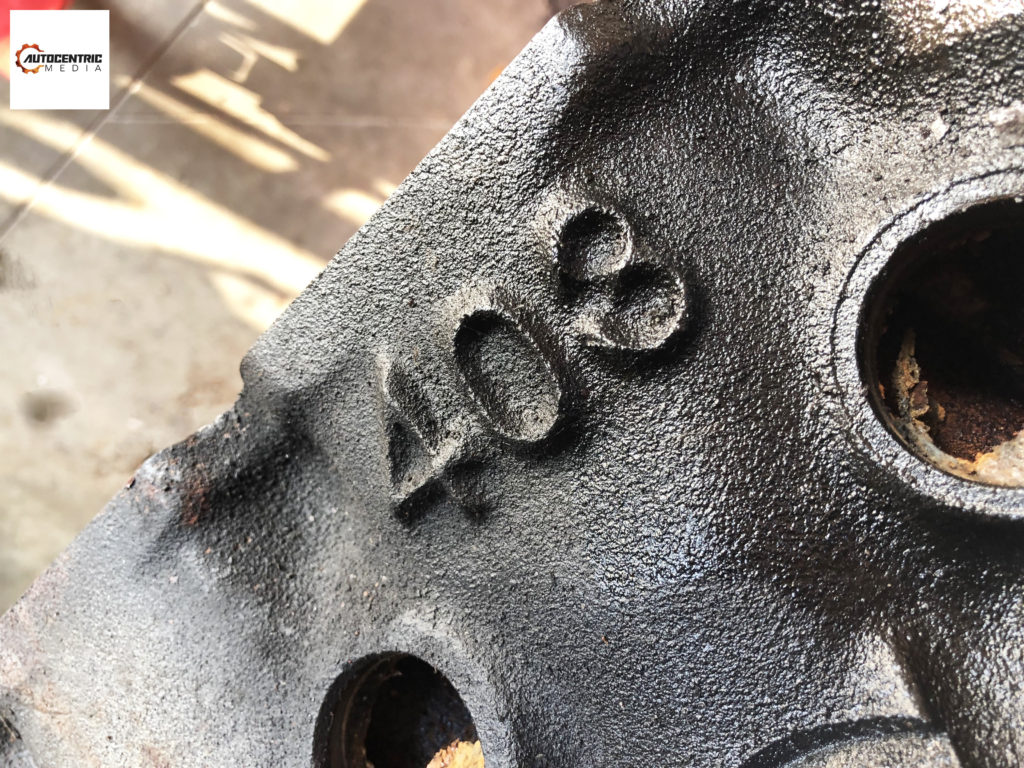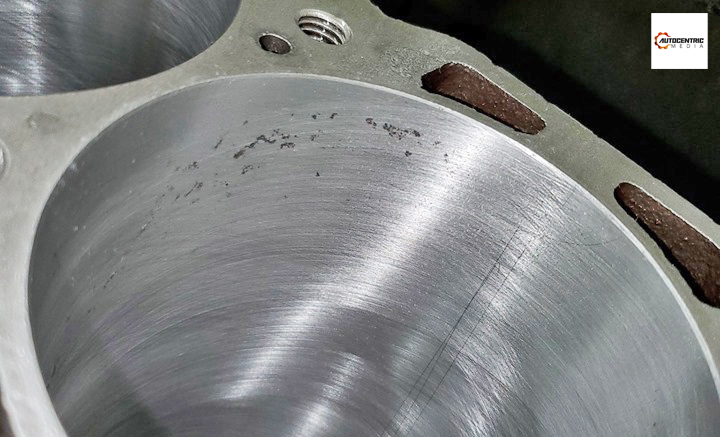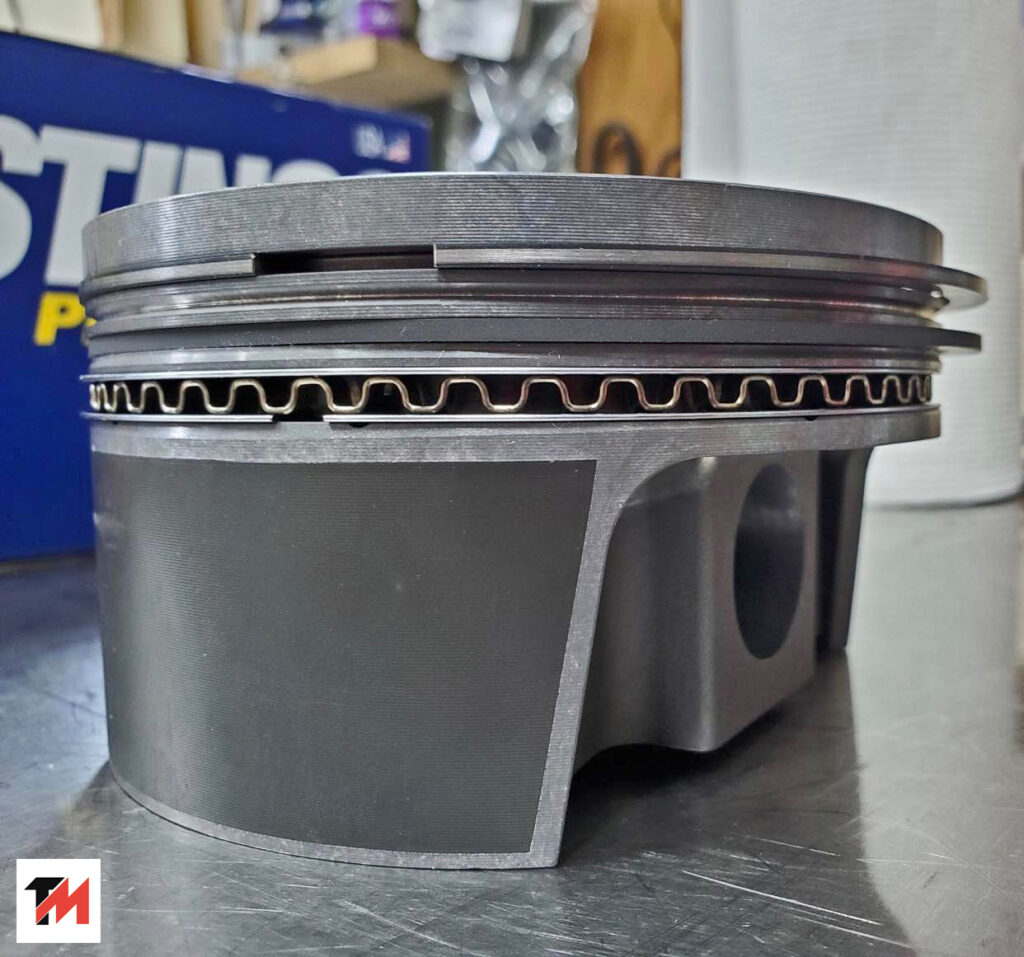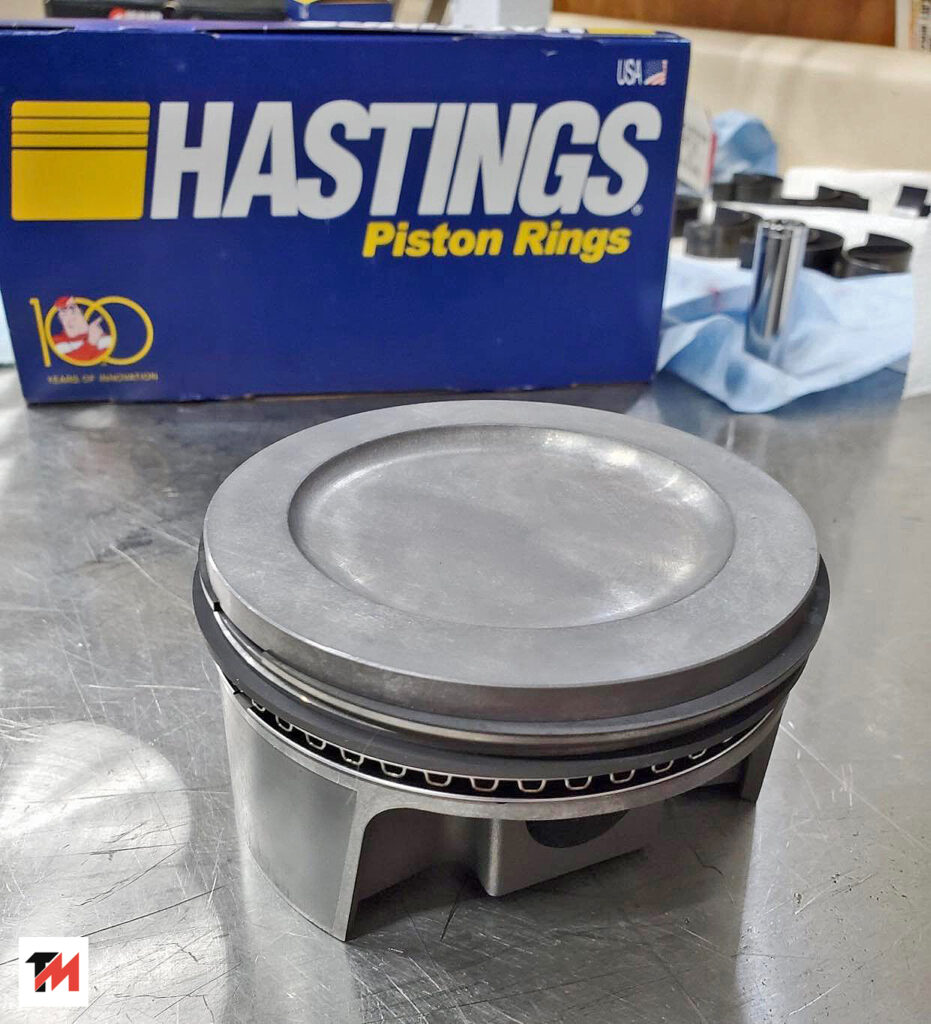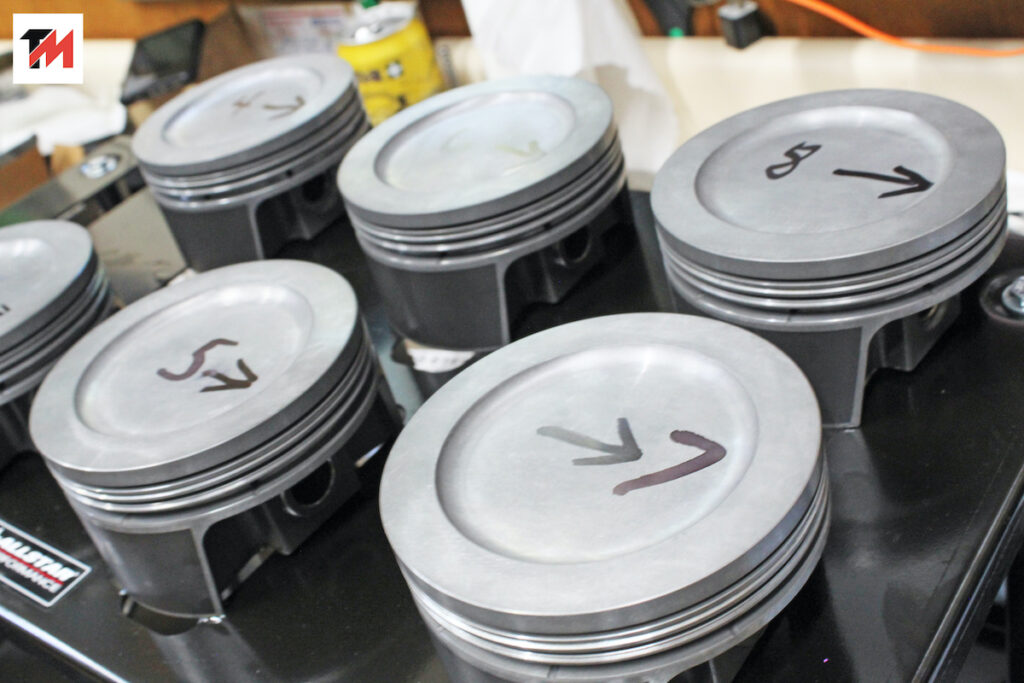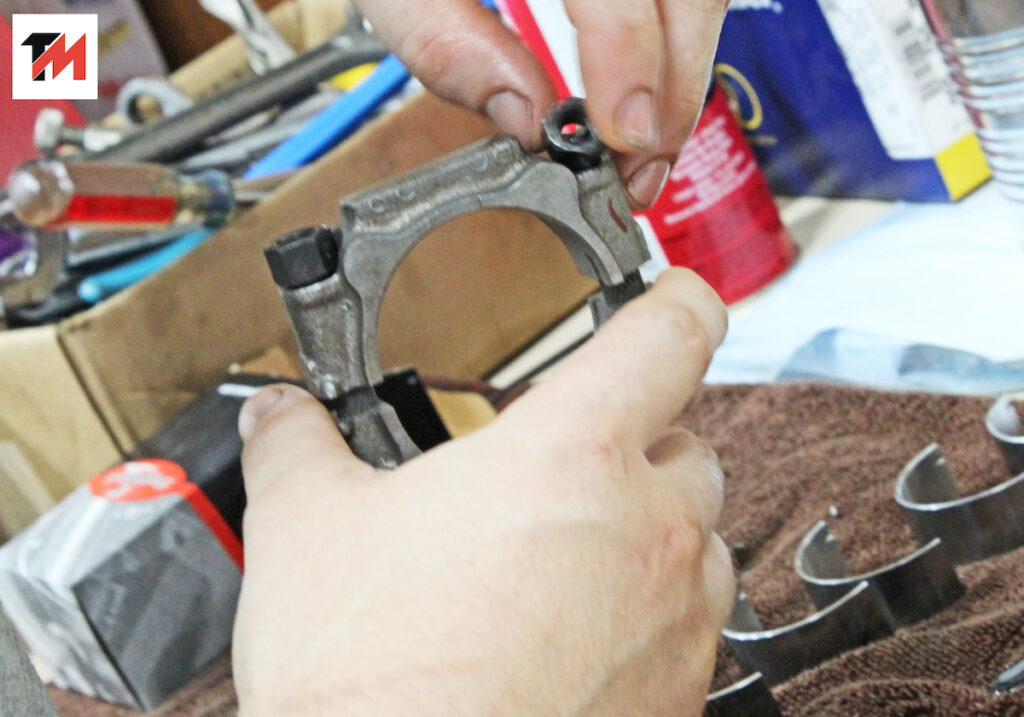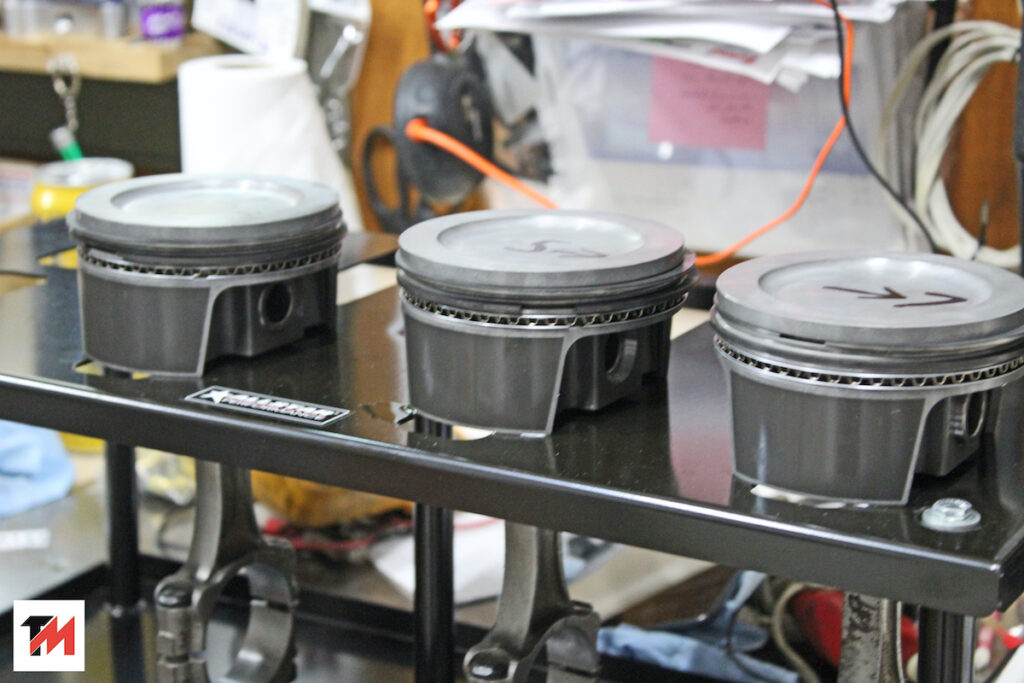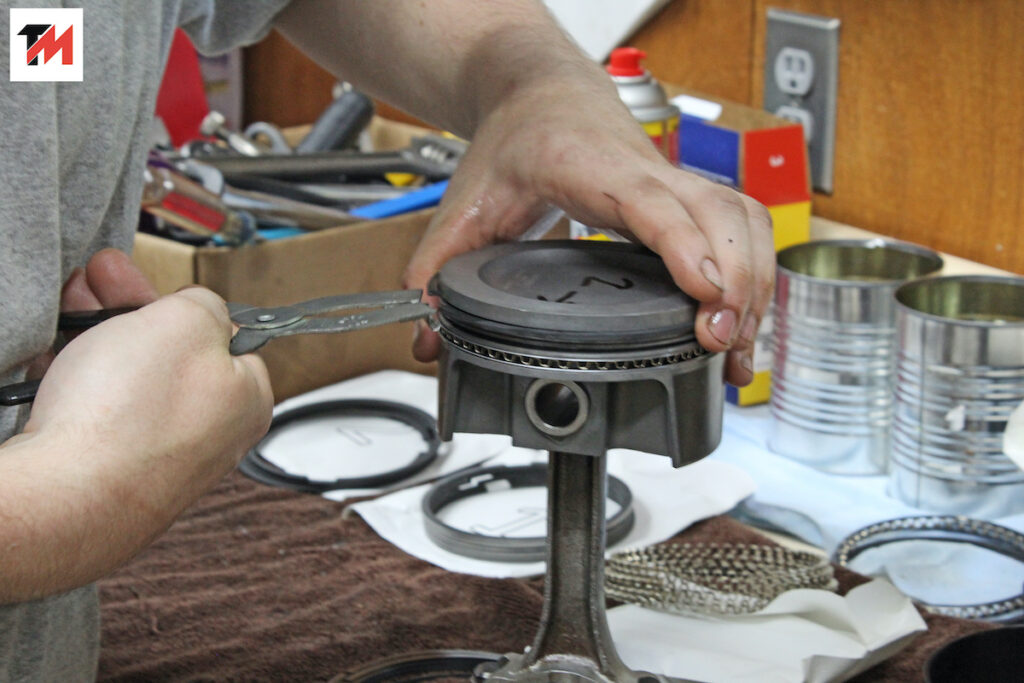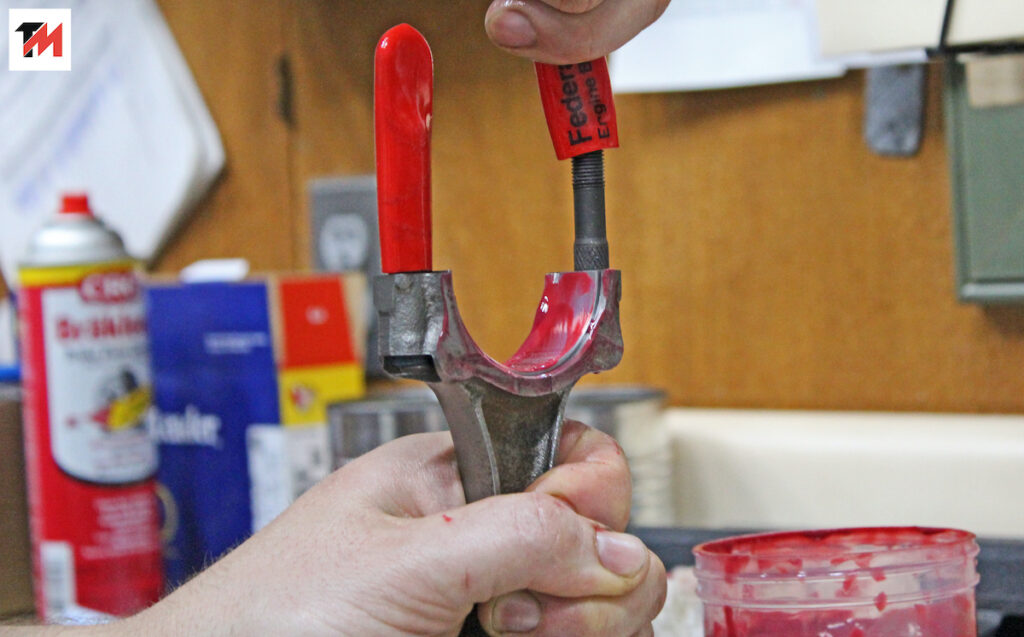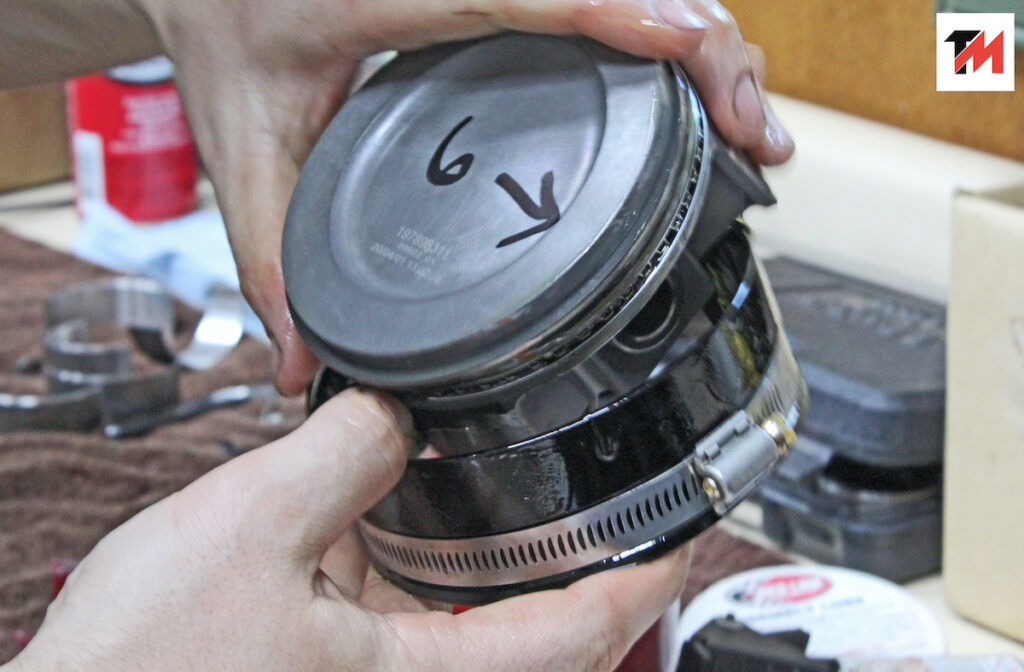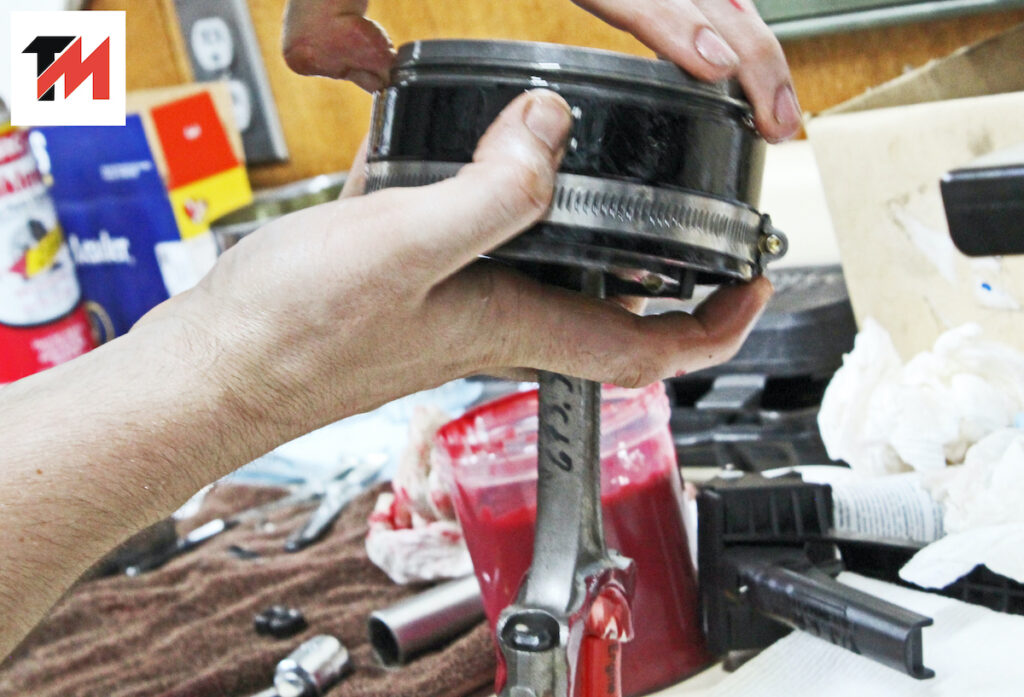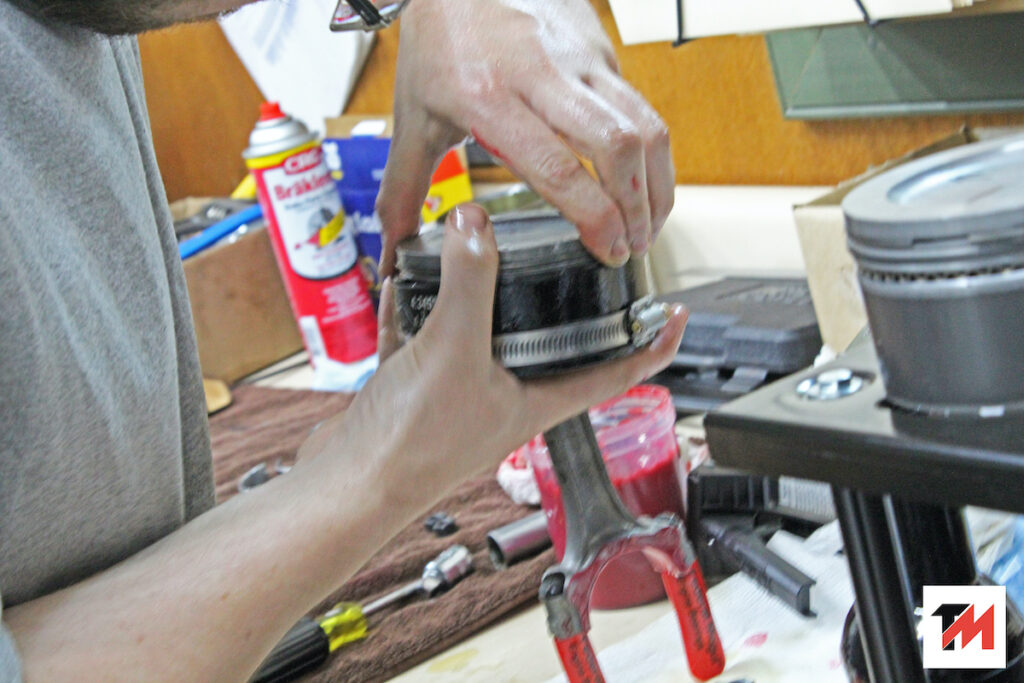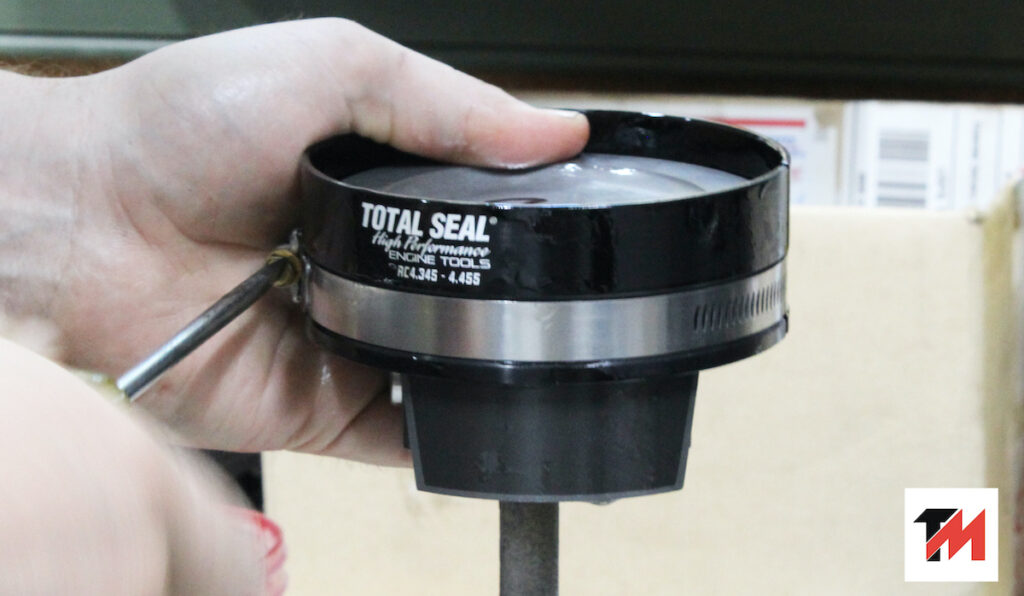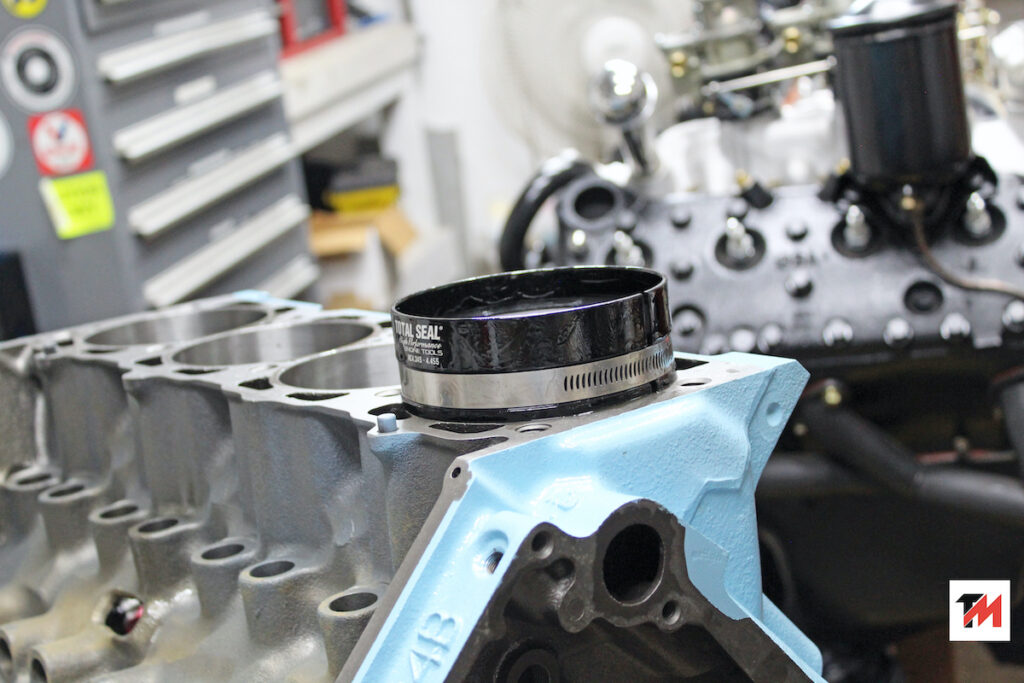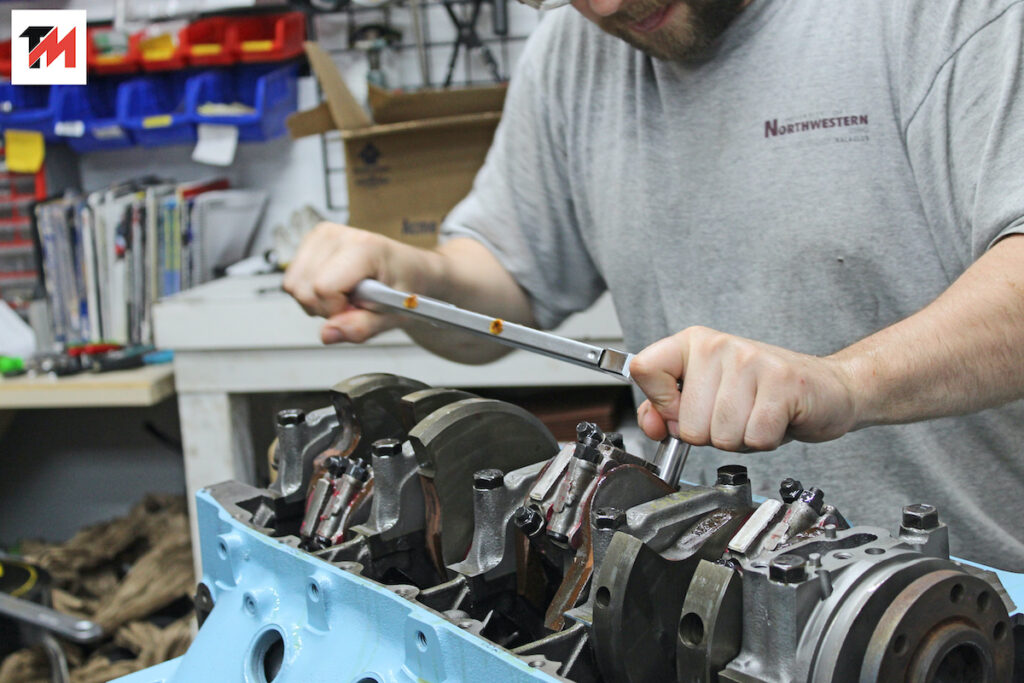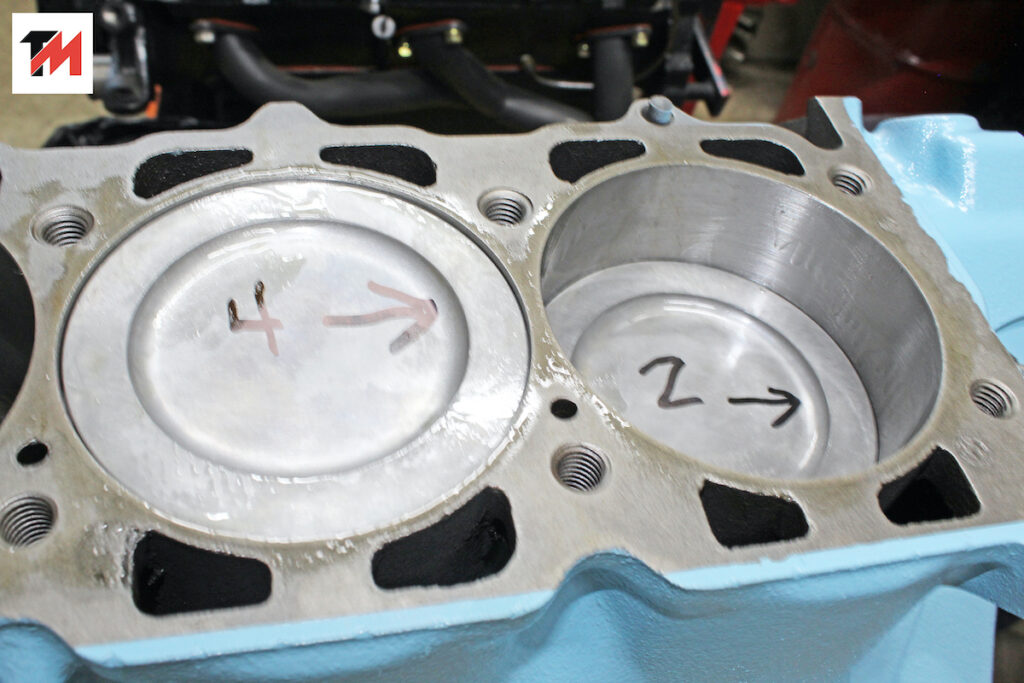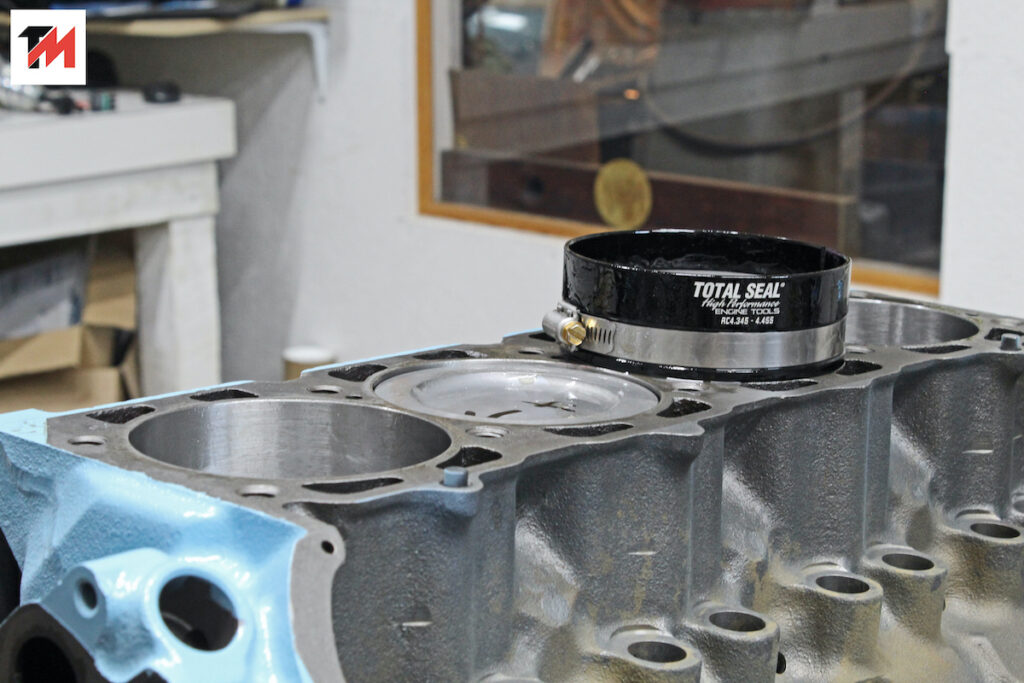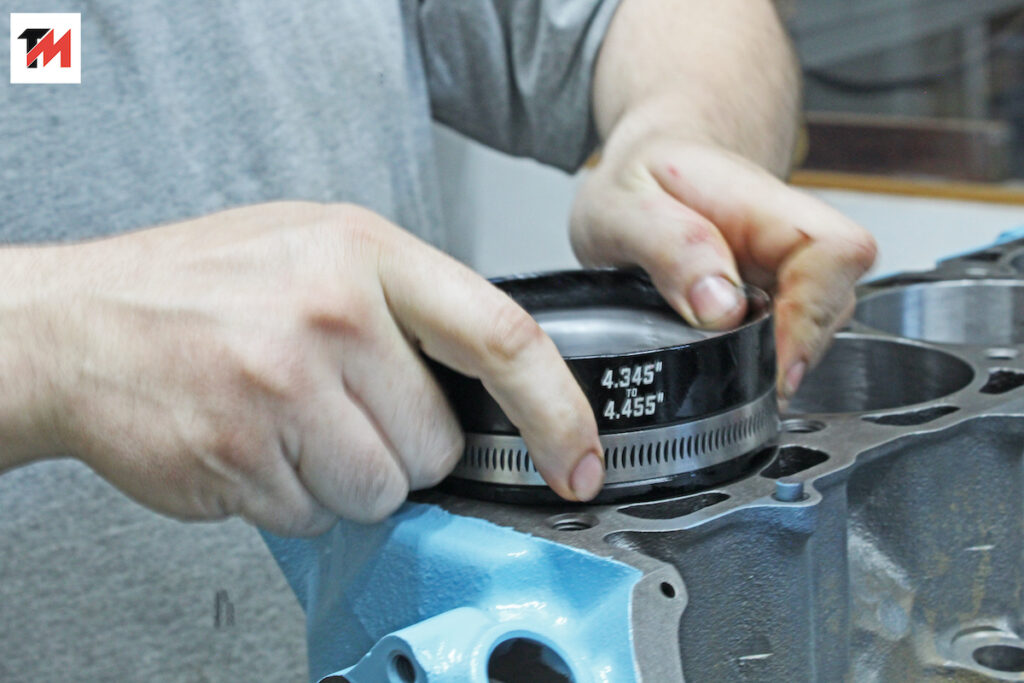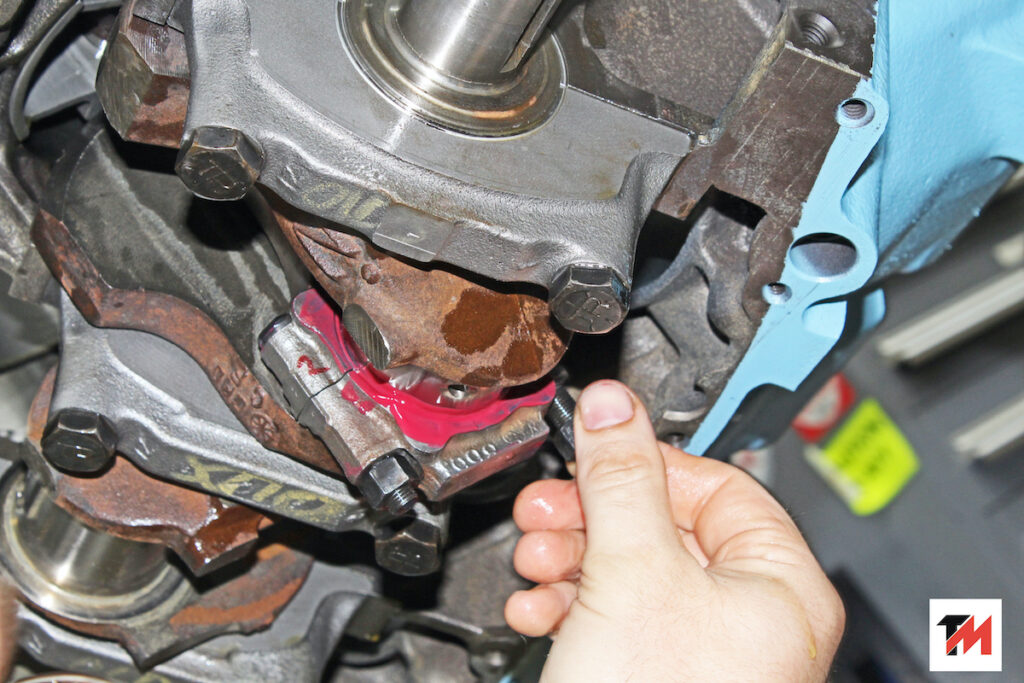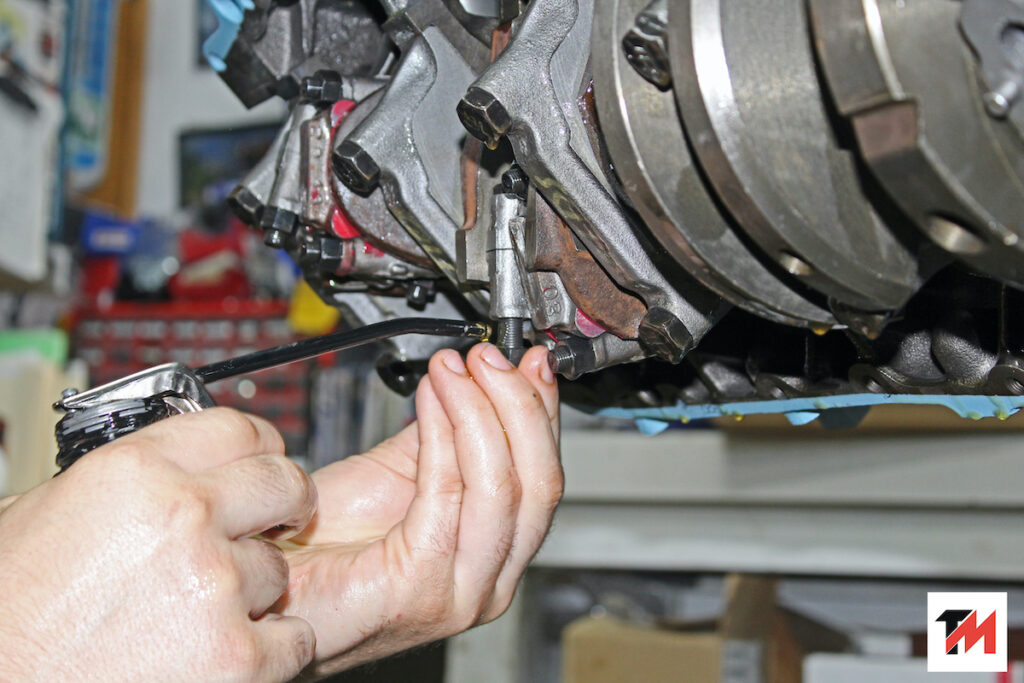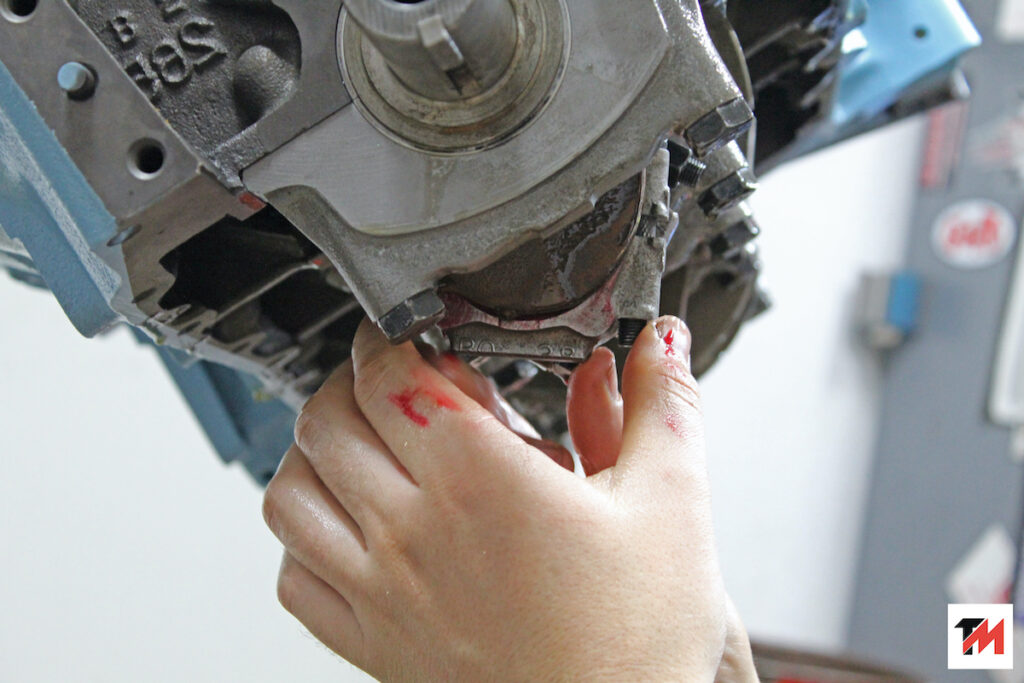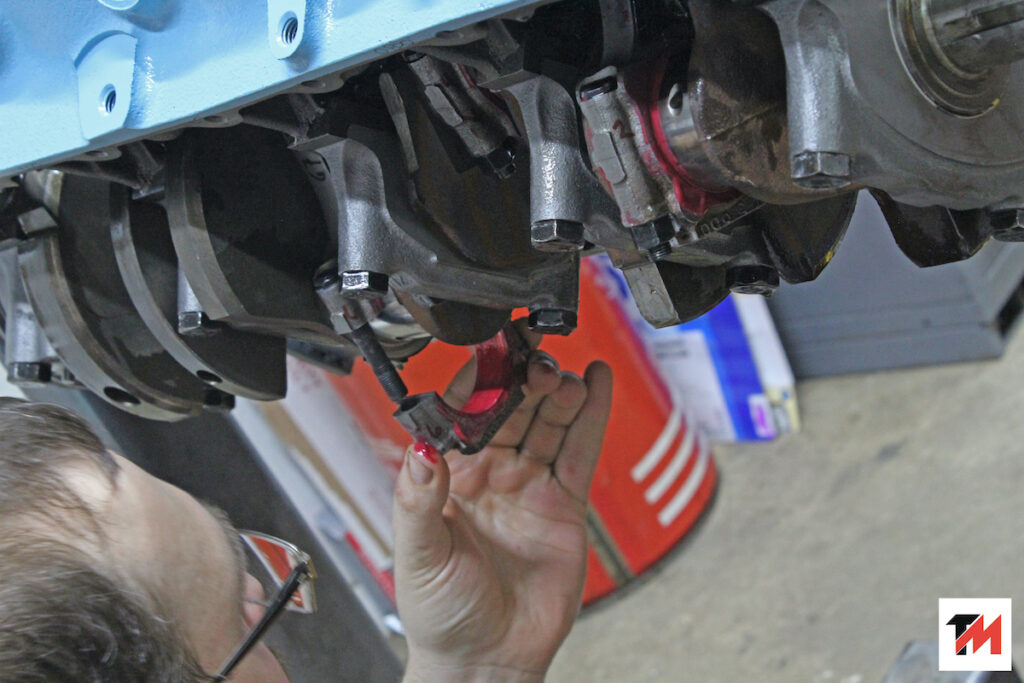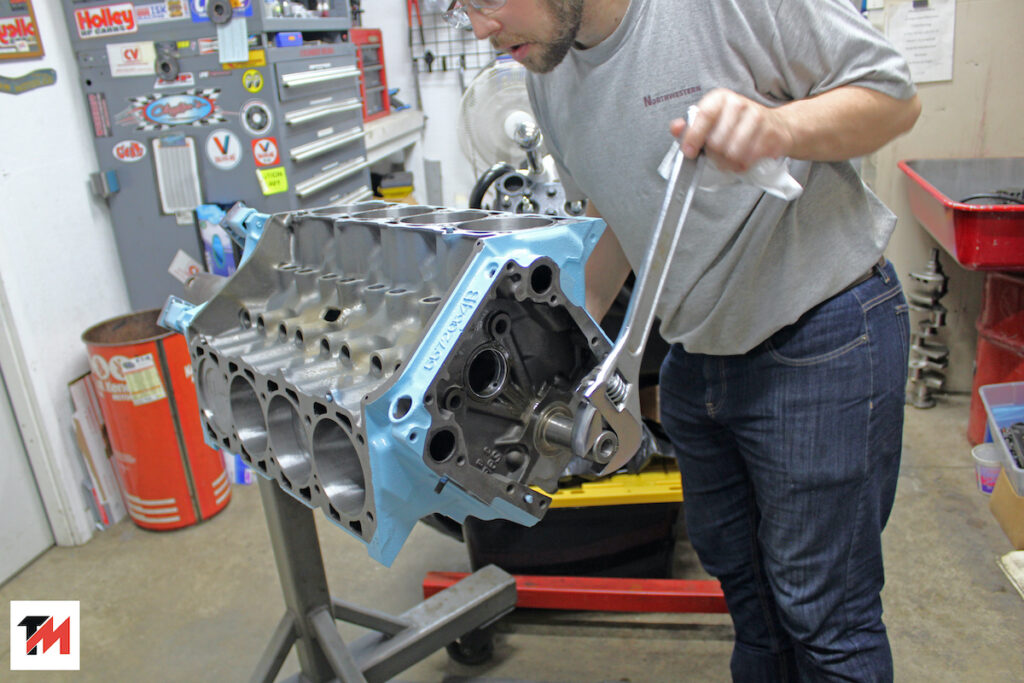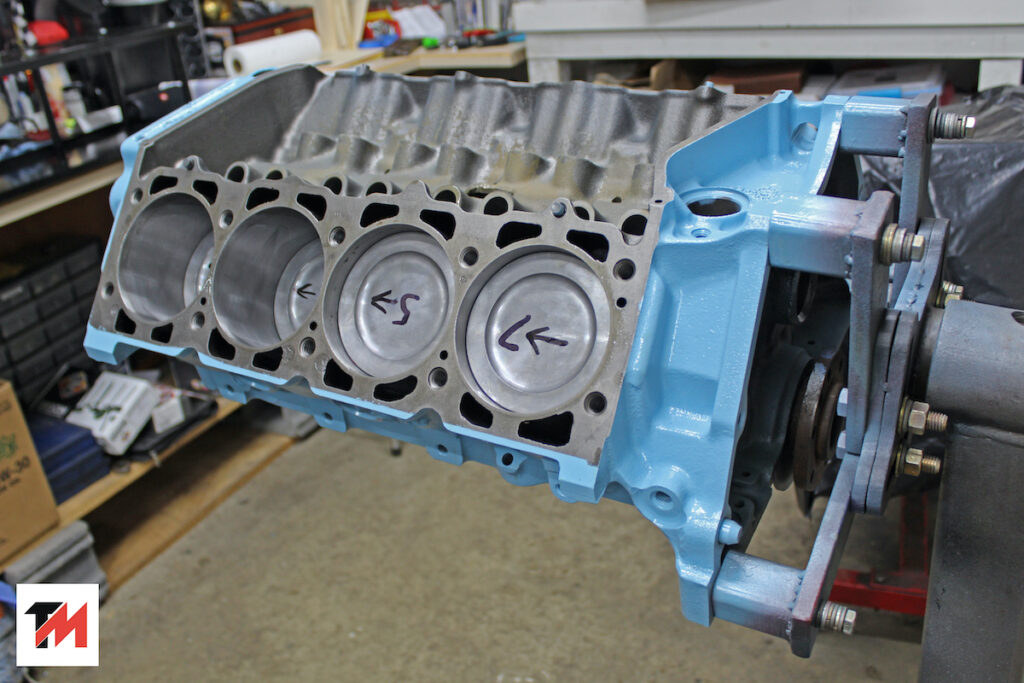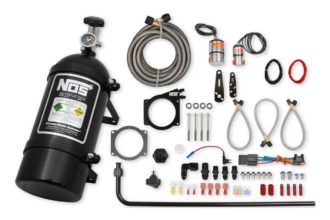photos by: the author
Taking the road less traveled with a .060 overbore Oldsmobile 403
For those of you who have been following along with our 1979 Pontiac Trans Am project, Billy Madison, you know that it’s been a long process in the making. From acquisition, to teardown, to the current rebuilding phase, it’s been an uphill battle maneuvering through parts shortages and a pandemic. However, in this installment, we make some headway.
Pulling out the rusted, crusty, oddly painted-black, derelict, original 403 was mentioned before, but we’re going to dig a little bit deeper now, and show you some of the rebuilding process. You may be wondering why we didn’t just ditch the original engine altogether, and go with an Olds 455, Pontiac 455, or really tick off the “purists,” and drop in a modern LS or LT engine.
If the situation were any different, your author wouldn’t have hesitated building a 455 cubic-inch LSX and squeezing it in between the flank of this Trans Am. But be it that it’s a numbers-matching 10th-Anniversary Edition example, I elected to at least try to save the OG Olds block before completely writing it off.
So I pulled it out of the engine bay, grabbed a few shots of it on the shop floor, and then loaded it up in The Mule to take it to Classic Engine Works in nearby Cortland, Ohio. Classic Engine Works is owned and operated by Neil Clayton, a previous contender of the coveted Engine Master Challenge, as well as the engine builder for Nick Kistler’s previously featured ’69 Chevelle. We’ve also enlisted his help with rebuilding the LS1 for the GMEFI Magazine 2002 Trans Am project, Project Phoenix.
After he pulled the heads off, he sent me a shot of what the cylinder bores looked like underneath — and it wasn’t good, frankly. In fact, most people would have just written it off then and there. But I don’t let let things like rust build-up stop us. In fact, after it was all pulled apart, the pistons, rods, and crank were all deemed too far gone to reuse — shocker. We also learned that there was an aftermarket COMP cam in the block, and that the cylinders were already bored .030 over from a previous rebuild. Considering the staggered wheels and tires that used to be on the car, and the drag strip stickers on the rear window, it was apparent that this car had seen some bracket racing in a previous life.
However, after full disassembly and a cleanup, it appeared that the block could be saved, maybe, with the help of Shawn at Minor’s Performance Machine. Shawn Minor has been keeping himself extremely busy for the last 30+ years, but he’s worked with your author, and with other publications in the past, as one of the top machinists in the country; porting blocks and cylinder heads, and building engines. In fact, he manages to keep himself so busy, that he doesn’t even have a website or social media page because his workload is so substantial as it is.
Despite that, he managed to slip this hunk of 43 year-old rust into the a time slot for us. After a couple of weeks working our engine through the schedule, he gave me a ring and told me that the block was still salvageable; confirming that it indeed had a .030 overbore to begin with, but he could take it down another .030 (.060, total). The downside is, that the walls would be about as thin as they could safely and reliably go, and there were some slight porous spots left over form the rust on the cylinder walls. Shawn ensured us that despite this, the engine will be fine and there wouldn’t be any issues with it.
However, the crankshaft, connecting rods, and of course the pistons, were absolutely toast. I figured as much, and considering our great relationship with MAHLE Motorsport, I didn’t hesitate to contact them first. In fact, the telephone conversation I had with Shawn Minor actually transpired while at the PRI Show, and I knew Joe Maylish of MAHLE was already in attendance.
So I swung by the MAHLE Motorsport to apprise them of my situation, and while Joe told me that they don’t typically stock .060 overbore slugs for an Oldsmobile 403 engine, he’d be happy to put the order in and get them to me as soon as possible. Then COVID-19 hit, and the world essentially shut down for a few months. Once the MAHLE crew were able to return, they ensured that my order was one of the “one-offs” on top of the list.
Meanwhile, I still needed a new crankshaft, bearings, and a set of rods for this engine. I didn’t necessarily need heavy-duty, high-horsepower hardware for the bottom end of the engine, as the .060 overbore has our cylinder walls running pretty thin as it is. So boost and nitrous are out of the equation, regardless. Since everything was on backorder at this point, I reached out to one of the Oldsmobile groups on Facebook to see if anyone had spares that were adequate enough for my engine.
Small world notwithstanding, one of my own Facebook friends from Florida by the name of Bruce Ponti (rear axle and Oldsmobile guru), actually had a clean set of usable rods and a crankshaft from a 403, that were perfect for our build. In fact, the rods were recently reassembled using ARP bolts, and the crank had just been cleaned. He said all I had to do was cover the shipping and they were mine — “deal!” We actually compiled a story with Bruce once before, on rebuilding an 8.5-inch rearend in Greg Lovell’s El Camino a few years back.
Working with our friends Joe Maylish and Eric Grilliot at MAHLE, we were able to spec our pistons .060 over (large diameter) from the original 4.351 bore. The .060 overbore bumped up the diameter to 4.441. We kept the OEM compression at 8.5:1, with a dish of 20cc.
With the pistons, rods, and crank on their way, we went ahead and ordered a set of Hastings piston rings from Summit Racing. They were designed specifically for a .060 overbore Olds (5/64, 5/64, 3/16) and had no issues applying them to our MAHLE pistons. Connected the rods to the pistons meant a new set of 0.984 wrist pins, and Trend Performance was able to answer the call in that department.
Below, is a depiction of the bottom end assembly process; from bolting the connecting roads to the MAHLE pistons, applying the bearing grease and sliding the .060 over slugs into the Oldsmobile block to be bolted to the crankshaft, tightening and torquing everything to specifications. Classic Engine Works’ own Eddie Smusz handled reassembly for us that day.
With the bottom-end buttoned up, we’re looking forward to bringing you the second part of the story, where we apply the top end components; including the camshaft, cylinder heads and intake manifold. We didn’t complete the complete engine assembly in one article, because the components we’ve ordered will be fresh to market, and are still in the development stage as we speak. We don’t want to spoil any surprises, so you’ll have to keep your eye out for Part 2 of the engine build.

Rick Seitz is the owner and founder of AutoCentric Media, and has a true love and passion for all vehicles; GM, Ford, Dodge, imports, trucks — you name it! When he isn’t clacking away on his keyboard, he’s building, tuning, driving or testing his current crop of personal projects!




